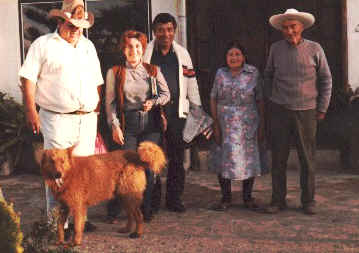Classical Marxism and the Agrarian Question
Lenin
Lenin’s analysis in his famous book The Development of Capitalism in Russia took Marx’s original model quite a bit further, and modified it in subtle ways. Like Marx, Lenin hedged his bets a little by adding various caveats and ‘countervaling tendencies’ to what he presented, nevertheless, as an inevitable long term process of peasant differentiation and class polarization, and he added further qualifications in later works. In the original book, Lenin suggested that what he called the "peasant bourgeoisie", the kulaks, were not the "real masters of the Russian countryside" in the pre-revolutionary period: landlords continued to exploit middle peasants as corvée labour, i.e. demanded labour service in a ‘feudal’ manner, and village merchant usurers continued to prop up the middle peasantry because it was in their interests to do so. Lenin argued that the continuing dominance of landlords and merchant capital retarded the ‘full’ development of capitalist relations in agriculture, i.e. production based on ‘free wage labour’, and therefore the full development of the forces of production, the maximum possible increase in agricultural productivity. So both Marx and Lenin thought that peasant agriculture was ultimately incompatible with the full development of industrial capitalism, but Lenin spelt out a much more explicit theory of the relationship between capitalist development in agriculture and the development of capitalist industry than Marx had done. He placed particular emphasis on the role of peasant differentiation in the development of a home market
Picture shows - two generations of a wealthy Mexican peasant family outside their California-style home.
In general terms, there are at least four possible ways in which the agricultural sector provides resources necessary for industrialization.
[1] The labour surplus. Rural people who can no longer sustain themselves by farming alone provide the ‘free wage labour’ required by capitalist industry. This was the aspect Marx emphasized most, and in relation to a second factor:
[2] The marketable surplus. If industry is to develop, then the growing number of industrial workers need to be fed. The agricultural surplus must therefore be capable of growth. As far as Marx was concerned, use of wage labour in agriculture was as important for raising agricultural productivity as it was in the development of manufacturing production. So rural proletarianization was important because it created the conditions for the development of capitalist agriculture as well. Pre-capitalist agriculture would be a block on industrial development because it would not be able to increase agricultural productivity and the marketable surplus to keep pace with the growing demand of the non-agricultural sector.
[3] The development of the home market. This was Lenin’s main point. Peasant households are units of production and consumption, whereas proletarian households must buy their necessities on the market. As Marx and Lenin were well aware, European peasant households often subsisted by combining craft production and petty trading with farming. Industrial development based on the national market requires a breakdown of household self-sufficiency. As Lenin put it: "the rural proletarian, as distinct from the middle peasantry, consumes less, but buys more. Lenin also argued that the growth of the new peasant bourgeoisie, the kulaks, provided a stimulus to the development of the market: kulaks provided a market for means of production, such as improved agricultural implements, as well as through their increasing levels of personal consumption, and were to the fore in fostering the development of commercial agriculture and spread of money economy in the countryside. Traditional landlords, on the other hand, tended to act in a way which inhibited the development of commodity relations, in Lenin’s view.
[4] There is a fourth way in which agriculture can contribute to industrial development, which was also emphasised in Russia, both before and after the Revolution, but not by Lenin, because he felt it was incompatible with the type of middle plus poor peasant-worker alliance which he advocated as a political necessity given the small size of the Russian proletariat. As well as a labour surplus and the marketable surplus, agriculture can provide an investment surplus. What this means is that the agricultural sector can be used to provide resources to finance national industrial development.
In Russia, this possibility was initially advocated at the end of the 19th century by the Tsarist minister Witte, but it was subsequently offered as a possible model for socialist development by the Soviet economist and leading bolshevik E. Preobrazhenski during the debate of the 1920s on the New Economic Policy and strategy for Soviet Industrialization. It is also highly pertinent to understanding the way peasant agriculture contributed to the industrialization of "Third World" countries.


